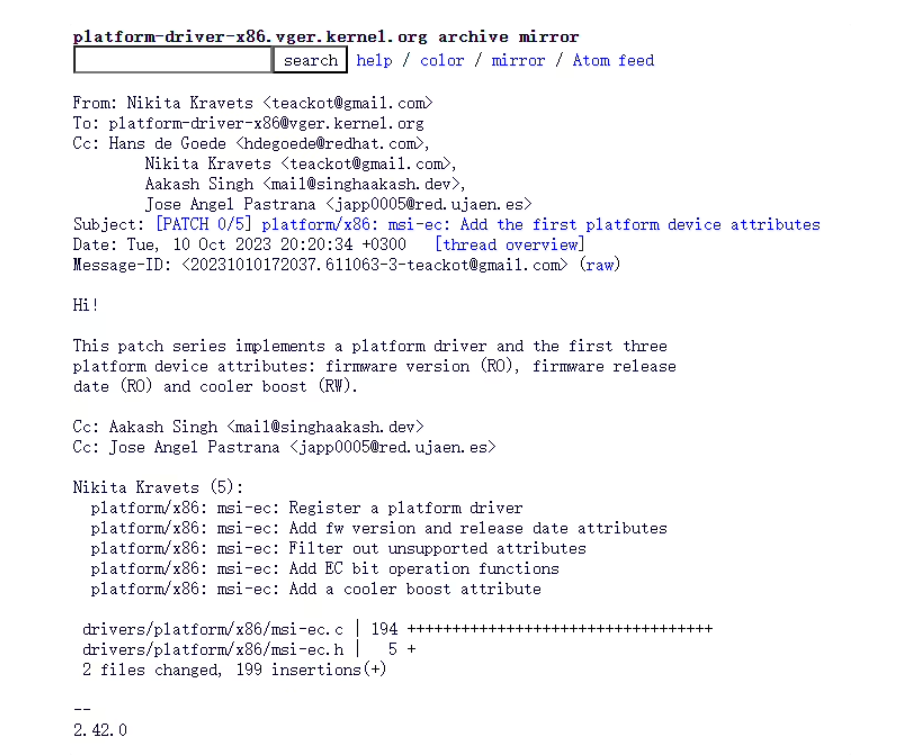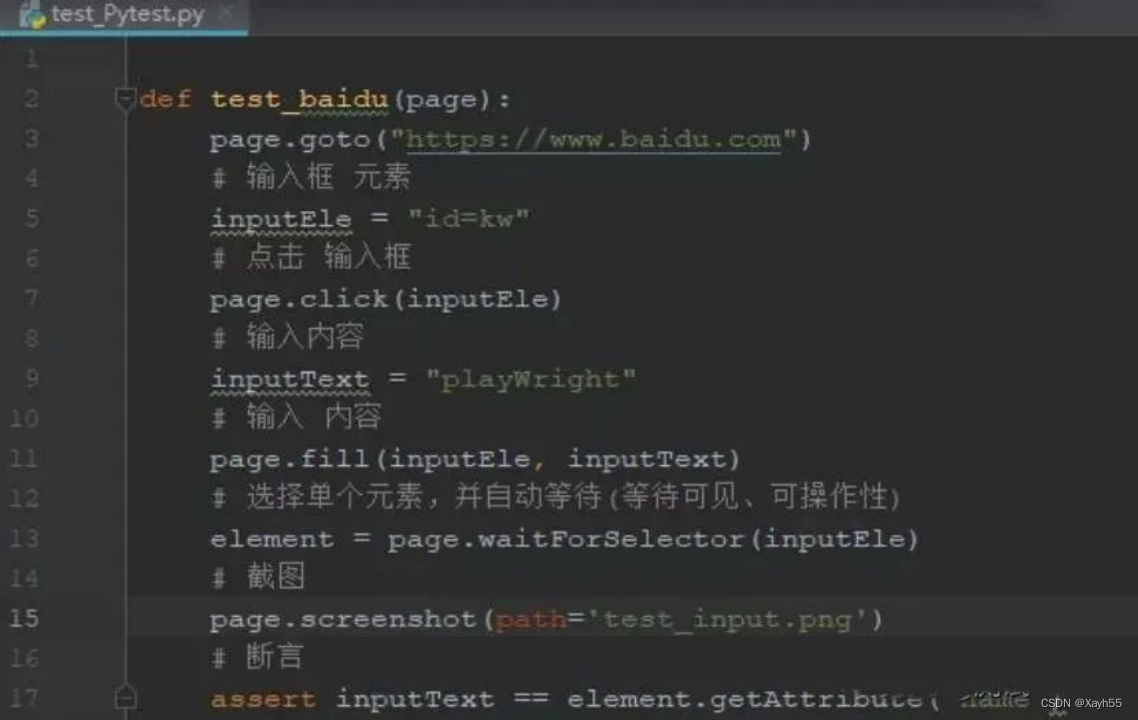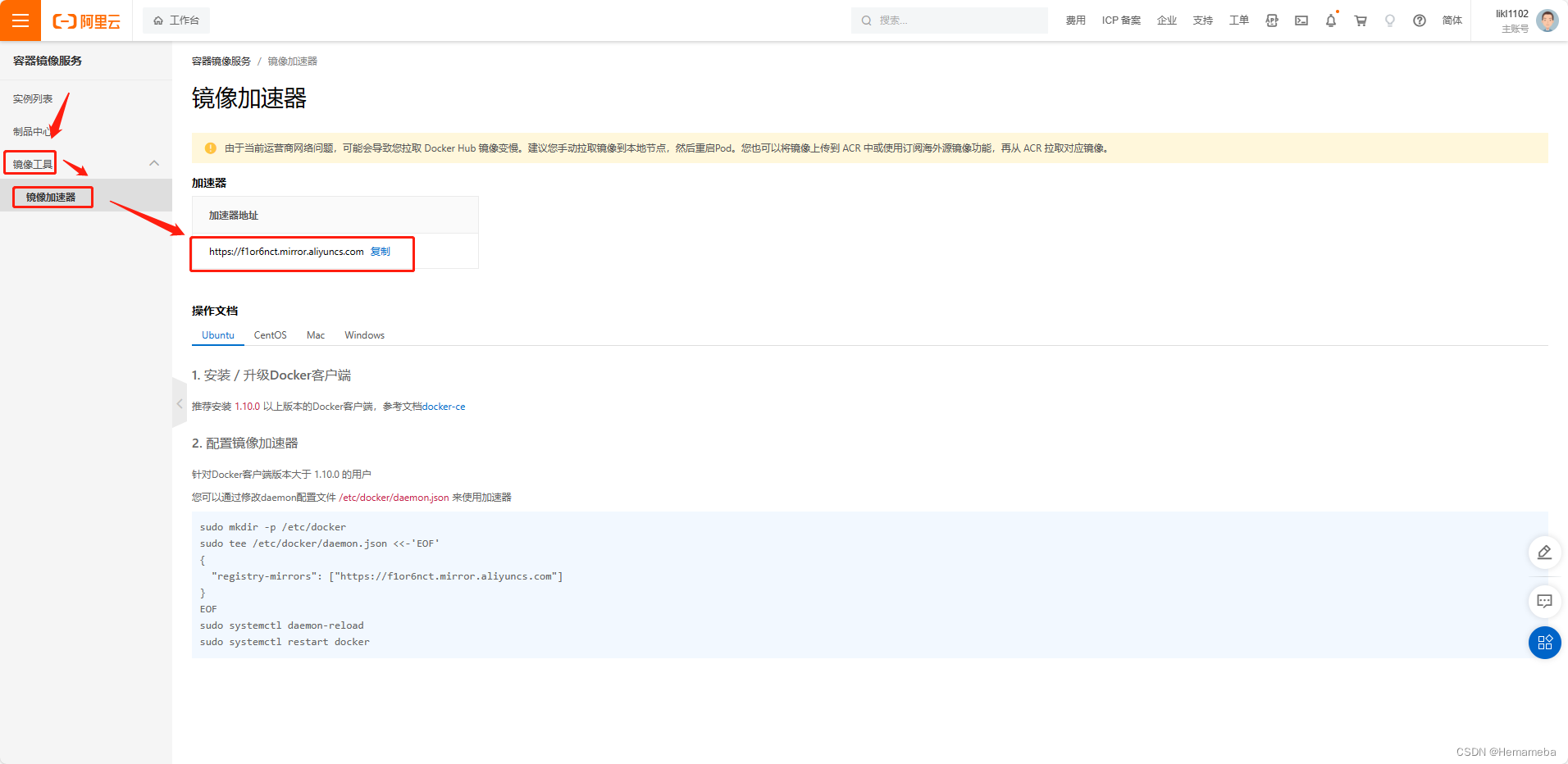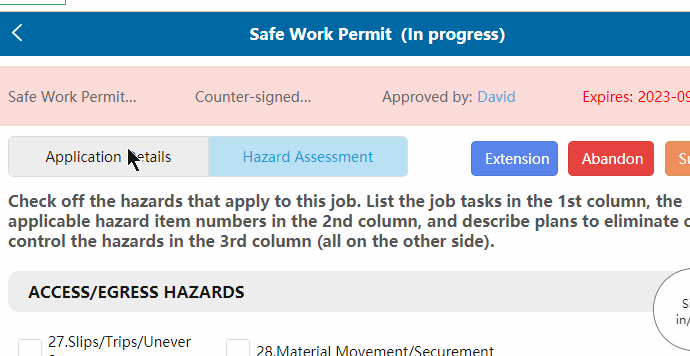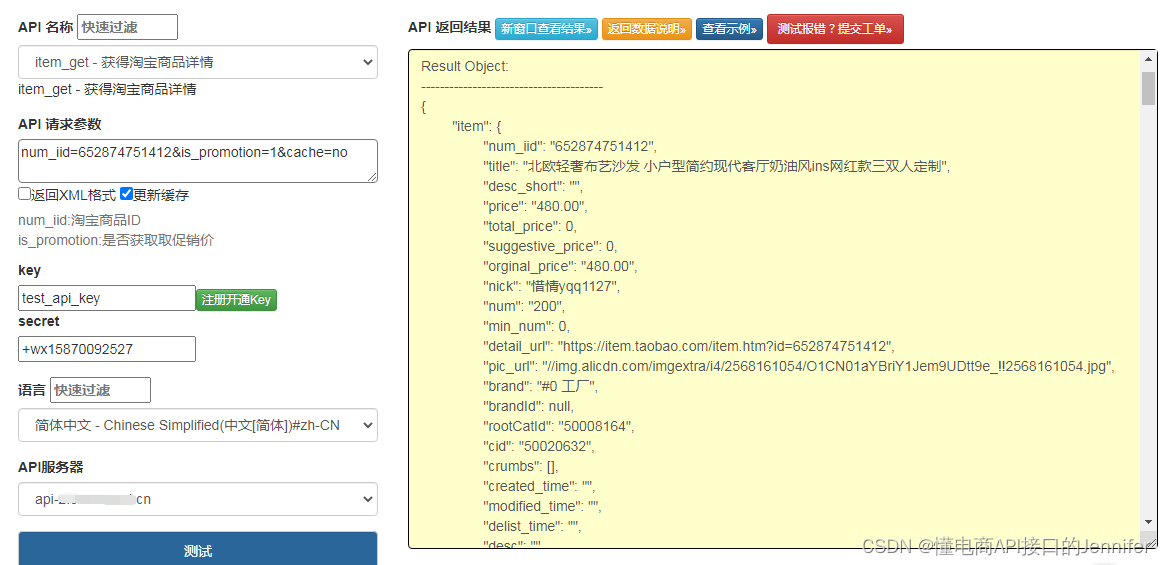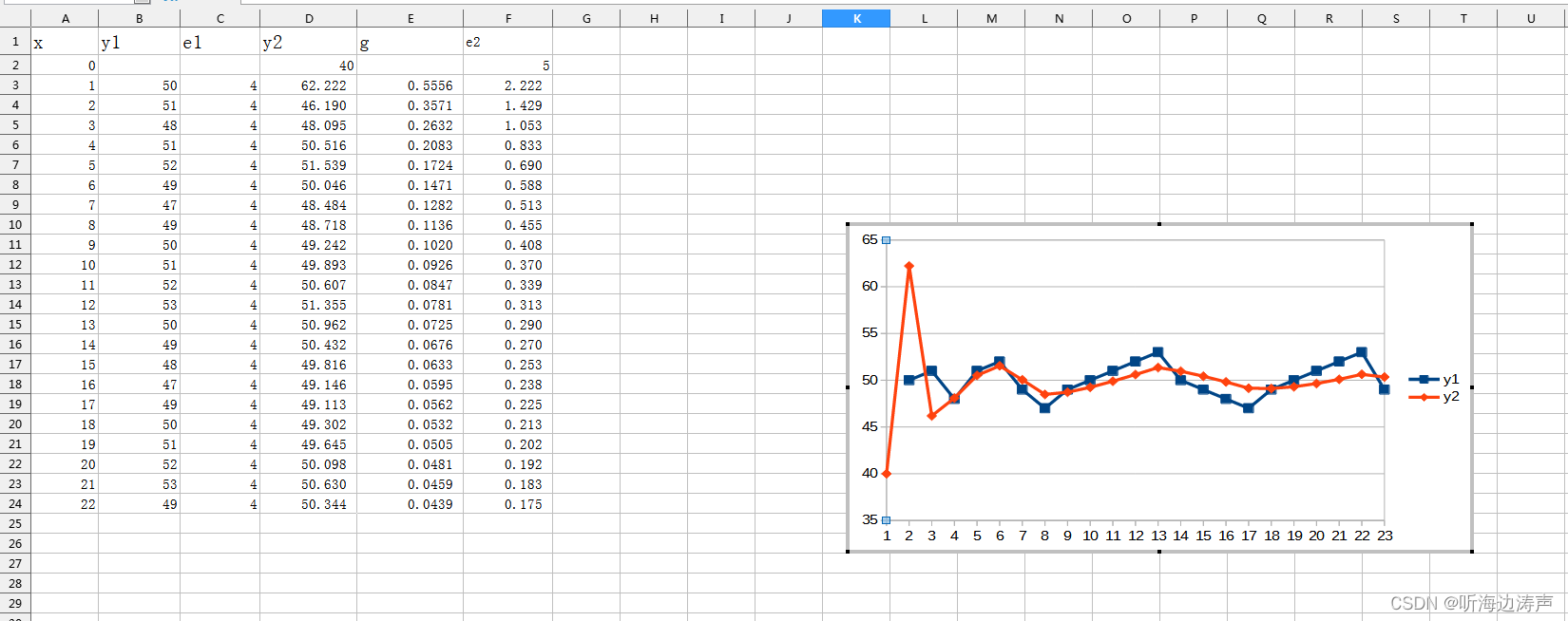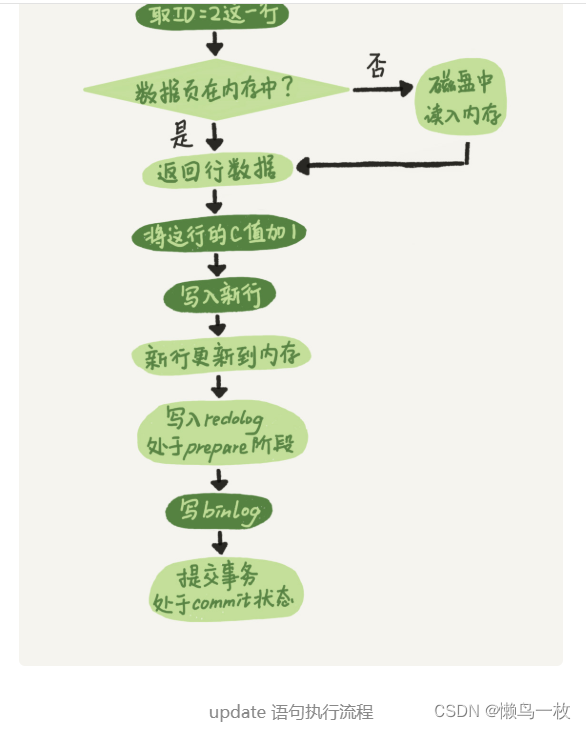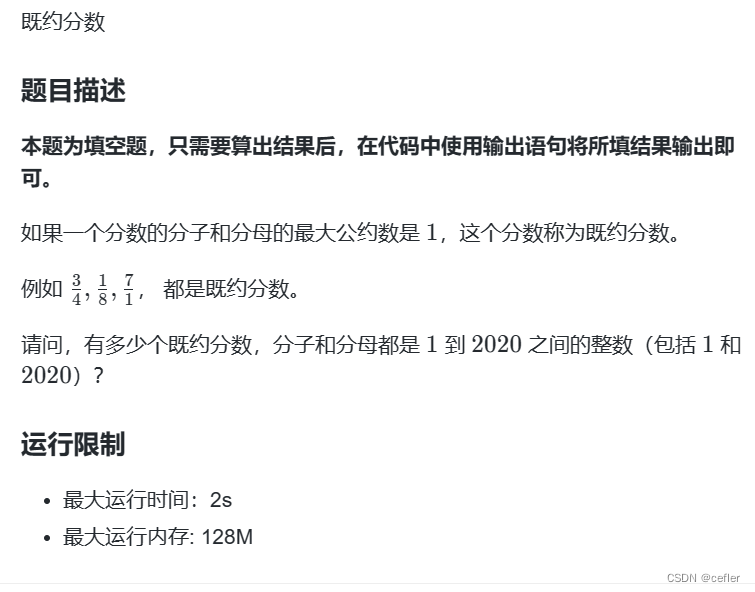1.Handler 简介
Handler 是一套 Android 消息传递机制。在多线程应用场景中,将子线程中需要更新 UI 的操作消息,传递到 UI 主线程,从而实现子线程通知 UI 更新最终实现异步消息处理。说白了是用于线程之间的通信。
Handler主要有4个重要类:Handler、Message、MessageQueue、Looper。
- Handler:负责消息的发送和处理,子线程中使用 sendMessage() 发送消息;在handleMessage()中处理。
- Message:消息载体,里面存储这线程消息。
- MessageQueue:消息队列,遵循先进先出的原则,存储着 sendMessage() 发送来的子线程消息。
- Looper:消息循环器,负责从 MessageQueue 中循环取消息,再将取出的消息分发给handleMessage(),来处理消息。
2.Handler原理

3.Handler 源码
了解 Handler,首先我们要了解 Handler 从消息发送到消息处理这整个流程,下面将分析这一流程,并回答下面几个问题:
- 一个线程有几个Handler?
- 一个线程有几个Looper?如何保证?
- Handler 内存泄漏原因?为什么其他的内部分没有过这个问题?
- 为何主线程可以 new Handler?如果想要在子线程中 new Handler 要做些什么准备?
- 子线程中的维护的 looper,消息队列无消息的时候处理方案是什么?有什么用?
- 既然可以存在多个 Handler 往 MessageQueue 中添加数据(发消息时,各个handler 可能处于不同的线程),那么它内部是如何确保线程安全的?
- 我们使用 Message 时应如何创建它?
- 使用 Handler 的 postDelay 后,消息队列会有什么变化?
- Looper 死循环为什么不会导致应用卡死(ANR)?
Handler
Handler 负责消息的发送和处理,该类中通过 sendXXX、postXXX等方法发送消息,共有14个这样的方法。而在 handleMessage() 中处理收到的消息。
这里以 sendMessage(Message msg) 方法为例进行源码分析。
frameworks/base/core/java/android/os/Handler.java
public class Handler {
......
public final boolean sendMessage(@NonNull Message msg) {
return sendMessageDelayed(msg, 0);
}
public final boolean sendMessageDelayed(@NonNull Message msg, long delayMillis) {
if (delayMillis < 0) {
delayMillis = 0;
}
// 第二的参数代表执行的时间,为:系统当前时间+延迟的时间
return sendMessageAtTime(msg, SystemClock.uptimeMillis() + delayMillis);
}
public boolean sendMessageAtTime(@NonNull Message msg, long uptimeMillis) {
MessageQueue queue = mQueue;
if (queue == null) {
RuntimeException e = new RuntimeException(
this + " sendMessageAtTime() called with no mQueue");
Log.w("Looper", e.getMessage(), e);
return false;
}
return enqueueMessage(queue, msg, uptimeMillis);
}
// 不管使用什么方法发送消息,都会调到 Handler#enqueueMessage()
private boolean enqueueMessage(@NonNull MessageQueue queue, @NonNull Message msg,
long uptimeMillis) {
// 把当前对象赋给msg.target,这样 Message 就持有了 Handler
msg.target = this;
msg.workSourceUid = ThreadLocalWorkSource.getUid();
if (mAsynchronous) {
msg.setAsynchronous(true);
}
// 调用 MessageQueue#enqueueMessage() 往消息队列添加消息。
return queue.enqueueMessage(msg, uptimeMillis);
}
......
}
MessageQueue
enqueueMessage 里面其实是一个优先级队列,将收到消息根据执行的时间 when 进行做排序处理。
frameworks/base/core/java/android/os/MessageQueue.java
public final class MessageQueue {
......
boolean enqueueMessage(Message msg, long when) {
if (msg.target == null) {
throw new IllegalArgumentException("Message must have a target.");
}
synchronized (this) {
if (msg.isInUse()) {
throw new IllegalStateException(msg + " This message is already in use.");
}
if (mQuitting) {
IllegalStateException e = new IllegalStateException(
msg.target + " sending message to a Handler on a dead thread");
Log.w(TAG, e.getMessage(), e);
msg.recycle();
return false;
}
msg.markInUse();
msg.when = when;
Message p = mMessages;
boolean needWake;
// 如果是0,则放在最前面
if (p == null || when == 0 || when < p.when) {
// New head, wake up the event queue if blocked.
msg.next = p;
mMessages = msg;
needWake = mBlocked;
} else {
// Inserted within the middle of the queue. Usually we don't have to wake
// up the event queue unless there is a barrier at the head of the queue
// and the message is the earliest asynchronous message in the queue.
needWake = mBlocked && p.target == null && msg.isAsynchronous();
Message prev;
// 对单链表轮询,根据 when 进行排序插入消息。
for (;;) {
prev = p;
p = p.next;
if (p == null || when < p.when) {
break;
}
if (needWake && p.isAsynchronous()) {
needWake = false;
}
}
msg.next = p; // invariant: p == prev.next
prev.next = msg;
}
// We can assume mPtr != 0 because mQuitting is false.
if (needWake) {
nativeWake(mPtr);
}
}
return true;
}
......
}
到这里发消息基本完成,后面看如何取消息。
next() 中返回一个 Message。
frameworks/base/core/java/android/os/MessageQueue.java
public final class MessageQueue {
......
Message next() {
// Return here if the message loop has already quit and been disposed.
// This can happen if the application tries to restart a looper after quit
// which is not supported.
final long ptr = mPtr;
if (ptr == 0) {
return null;
}
int pendingIdleHandlerCount = -1; // -1 only during first iteration
int nextPollTimeoutMillis = 0;
for (;;) { // 死循环,
if (nextPollTimeoutMillis != 0) {
Binder.flushPendingCommands();
}
// nextPollTimeoutMillis :-1 表示无限等待,直到有事件为止;0 表示立即执行;其他数字表示等待多时毫秒。
// linux 层休眠等待,
nativePollOnce(ptr, nextPollTimeoutMillis);
synchronized (this) {
// Try to retrieve the next message. Return if found.
final long now = SystemClock.uptimeMillis();
Message prevMsg = null;
// 拿到队列对头消息
Message msg = mMessages;
if (msg != null && msg.target == null) {
// Stalled by a barrier. Find the next asynchronous message in the queue.
do {
prevMsg = msg;
msg = msg.next;
} while (msg != null && !msg.isAsynchronous());
}
if (msg != null) {
// 跟当前时间对比
if (now < msg.when) {
// 队列中,第一个节点还没到可以执行的时刻,则等待。
// Next message is not ready. Set a timeout to wake up when it is ready.
nextPollTimeoutMillis = (int) Math.min(msg.when - now, Integer.MAX_VALUE);
} else { // 到了可以执行的时间,则把消息 return 出去。
// Got a message.
mBlocked = false;
if (prevMsg != null) {
prevMsg.next = msg.next;
} else {
mMessages = msg.next;
}
msg.next = null;
if (DEBUG) Log.v(TAG, "Returning message: " + msg);
msg.markInUse();
return msg;
}
} else {
// No more messages.
nextPollTimeoutMillis = -1;
}
// Process the quit message now that all pending messages have been handled.
if (mQuitting) {
dispose();
return null;
}
// If first time idle, then get the number of idlers to run.
// Idle handles only run if the queue is empty or if the first message
// in the queue (possibly a barrier) is due to be handled in the future.
if (pendingIdleHandlerCount < 0
&& (mMessages == null || now < mMessages.when)) {
pendingIdleHandlerCount = mIdleHandlers.size();
}
if (pendingIdleHandlerCount <= 0) {
// No idle handlers to run. Loop and wait some more.
mBlocked = true;
continue;
}
if (mPendingIdleHandlers == null) {
mPendingIdleHandlers = new IdleHandler[Math.max(pendingIdleHandlerCount, 4)];
}
mPendingIdleHandlers = mIdleHandlers.toArray(mPendingIdleHandlers);
}
// Run the idle handlers.
// We only ever reach this code block during the first iteration.
for (int i = 0; i < pendingIdleHandlerCount; i++) {
final IdleHandler idler = mPendingIdleHandlers[i];
mPendingIdleHandlers[i] = null; // release the reference to the handler
boolean keep = false;
try {
keep = idler.queueIdle();
} catch (Throwable t) {
Log.wtf(TAG, "IdleHandler threw exception", t);
}
if (!keep) {
synchronized (this) {
mIdleHandlers.remove(idler);
}
}
}
// Reset the idle handler count to 0 so we do not run them again.
pendingIdleHandlerCount = 0;
// While calling an idle handler, a new message could have been delivered
// so go back and look again for a pending message without waiting.
nextPollTimeoutMillis = 0;
}
}
......
}
到此,消息取出来了,但是谁取的呢?这就涉及到另一个重要的类 Looper
Looper
Looper.loop() 里面会有个for循环,且是个死循环,会不断的调用 MessageQueue#next() 方法。
frameworks/base/core/java/android/os/Looper.java
public final class Looper {
......
// 初始化Looper
public static void prepare() {
prepare(true);
}
private static void prepare(boolean quitAllowed) {
if (sThreadLocal.get() != null) { // 如果该线程有 Looper,则抛出一个异常。
throw new RuntimeException("Only one Looper may be created per thread");
}
// 这里使用了 ThreadLocal,保证了一个线程只有一个Looper。
sThreadLocal.set(new Looper(quitAllowed));
}
public static void loop() {
final Looper me = myLooper();
if (me == null) {
throw new RuntimeException("No Looper; Looper.prepare() wasn't called on this thread.");
}
if (me.mInLoop) {
Slog.w(TAG, "Loop again would have the queued messages be executed"
+ " before this one completed.");
}
me.mInLoop = true;
// Make sure the identity of this thread is that of the local process,
// and keep track of what that identity token actually is.
Binder.clearCallingIdentity();
final long ident = Binder.clearCallingIdentity();
// Allow overriding a threshold with a system prop. e.g.
// adb shell 'setprop log.looper.1000.main.slow 1 && stop && start'
final int thresholdOverride =
SystemProperties.getInt("log.looper."
+ Process.myUid() + "."
+ Thread.currentThread().getName()
+ ".slow", 0);
me.mSlowDeliveryDetected = false;
for (;;) { // 死循环
// 不断地调用mQueue.next()
if (!loopOnce(me, ident, thresholdOverride)) {
return;
}
}
}
private static boolean loopOnce(final Looper me,
final long ident, final int thresholdOverride) {
// 这里如果此时队列中没有消息或队列中,第一个节点还没到可以执行的时刻,则会进入等待,block 状态。
// 会一直在这等,该等待是Linux层做的,在 mQueue.next()中
Message msg = me.mQueue.next(); // might block
if (msg == null) {
// No message indicates that the message queue is quitting.
return false;
}
// This must be in a local variable, in case a UI event sets the logger
final Printer logging = me.mLogging;
// Make sure the observer won't change while processing a transaction.
final Observer observer = sObserver;
final long traceTag = me.mTraceTag;
long slowDispatchThresholdMs = me.mSlowDispatchThresholdMs;
long slowDeliveryThresholdMs = me.mSlowDeliveryThresholdMs;
if (thresholdOverride > 0) {
slowDispatchThresholdMs = thresholdOverride;
slowDeliveryThresholdMs = thresholdOverride;
}
final boolean logSlowDelivery = (slowDeliveryThresholdMs > 0) && (msg.when > 0);
final boolean logSlowDispatch = (slowDispatchThresholdMs > 0);
final boolean needStartTime = logSlowDelivery || logSlowDispatch;
final boolean needEndTime = logSlowDispatch;
if (traceTag != 0 && Trace.isTagEnabled(traceTag)) {
Trace.traceBegin(traceTag, msg.target.getTraceName(msg));
}
final long dispatchStart = needStartTime ? SystemClock.uptimeMillis() : 0;
final long dispatchEnd;
Object token = null;
if (observer != null) {
token = observer.messageDispatchStarting();
}
long origWorkSource = ThreadLocalWorkSource.setUid(msg.workSourceUid);
try {
// 获取到消息后,就会调用 msg.target.dispatchMessage(msg),即回调 handler#dispatchMessage(msg)
// msg.target 为 handler对象
msg.target.dispatchMessage(msg);
if (observer != null) {
observer.messageDispatched(token, msg);
}
dispatchEnd = needEndTime ? SystemClock.uptimeMillis() : 0;
} catch (Exception exception) {
if (observer != null) {
observer.dispatchingThrewException(token, msg, exception);
}
throw exception;
} finally {
ThreadLocalWorkSource.restore(origWorkSource);
if (traceTag != 0) {
Trace.traceEnd(traceTag);
}
}
if (logSlowDelivery) {
if (me.mSlowDeliveryDetected) {
if ((dispatchStart - msg.when) <= 10) {
Slog.w(TAG, "Drained");
me.mSlowDeliveryDetected = false;
}
} else {
if (showSlowLog(slowDeliveryThresholdMs, msg.when, dispatchStart, "delivery",
msg)) {
// Once we write a slow delivery log, suppress until the queue drains.
me.mSlowDeliveryDetected = true;
}
}
}
if (logSlowDispatch) {
showSlowLog(slowDispatchThresholdMs, dispatchStart, dispatchEnd, "dispatch", msg);
}
if (logging != null) {
logging.println("<<<<< Finished to " + msg.target + " " + msg.callback);
}
// Make sure that during the course of dispatching the
// identity of the thread wasn't corrupted.
final long newIdent = Binder.clearCallingIdentity();
if (ident != newIdent) {
Log.wtf(TAG, "Thread identity changed from 0x"
+ Long.toHexString(ident) + " to 0x"
+ Long.toHexString(newIdent) + " while dispatching to "
+ msg.target.getClass().getName() + " "
+ msg.callback + " what=" + msg.what);
}
msg.recycleUnchecked();
return true;
}
......
}
当获取到消息时,回调用 msg.target.dispatchMessage(msg) 即 handler#dispatchMessage(msg),在 dispatchMessage(msg) 中再回调 handleMessage(msg),这样就收到消息。至此发消息、收消息整个流程结束。
下面回答上述的问题。
1、一个线程有几个Handler?
答:那个,new 多少就有多少。
2、一个线程有几个Looper?如何保证?
答:一个,在初始化时,使用了 ThreadLocal ,而 ThreadLocal 是一个 <key,value> 这种形式的变量,类似 hashMap。它的 key 是当前线程,value 是 Looper。
下方为对应源码分析:
// 初始化Looper
public static void prepare() {
prepare(true);
}
private static void prepare(boolean quitAllowed) {
if (sThreadLocal.get() != null) { // 如果该线程有 Looper,则抛出一个异常。
throw new RuntimeException("Only one Looper may be created per thread");
}
// 这里使用了 ThreadLocal,保证了一个线程只有一个Looper。
sThreadLocal.set(new Looper(quitAllowed));
}
// ThreadLocal 的 set() 方法
public void set(T value) {
Thread t = Thread.currentThread(); // 当前线程
ThreadLocalMap map = getMap(t);
if (map != null)
map.set(this, value);
else
createMap(t, value);
}
// ThreadLocal 的 get()方法,
public T get() {
Thread t = Thread.currentThread(); // 当前线程
ThreadLocalMap map = getMap(t);
if (map != null) {
ThreadLocalMap.Entry e = map.getEntry(this);
if (e != null) {
@SuppressWarnings("unchecked")
T result = (T)e.value;
return result;
}
}
return setInitialValue();
}
3、Handler 内存泄漏原因?为什么其他的内部分没有过这个问题?
出现内存泄漏的情况:Activity 销毁时,存在待处理的消息。例如:发送一个delay(延迟消息) 2s,在2s内销毁界面。
答:Handler 持有 Activity 的上下文,而 MessageQueue 持有 Message,Message 又持有 Handler;只有当这消息被处理时,才会去销毁对应的 Handler ,Handler 被销毁了,才会去销毁持有的上下文。而其他内部类,例如:RecyclerView 的 ViewHolder,不会产生内存泄漏,因为它没有被其它地方持有该内部类。
frameworks/base/core/java/android/os/Handler.java
public class Handler {
......
// 不管使用什么方法发送消息,都会调到 Handler#enqueueMessage()
private boolean enqueueMessage(@NonNull MessageQueue queue, @NonNull Message msg,
long uptimeMillis) {
// 把当前对象赋给msg.target,这样 Message 就持有了 Handler
msg.target = this;
msg.workSourceUid = ThreadLocalWorkSource.getUid();
if (mAsynchronous) {
msg.setAsynchronous(true);
}
// 调用 MessageQueue#enqueueMessage() 往消息队列添加消息。
return queue.enqueueMessage(msg, uptimeMillis);
}
......
}
4、为何主线程可以 new Handler?如果想要在子线程中 new Handler 要做些什么准备?
答:主线程在创建时,系统 ActivityThread 就已经创建好了。在子线程中 new Handler 需想初始化 Looper(Looper.prepare()),并启动 loop(Looper.loop())
frameworks/base/core/java/android/app/ActivityThread.java
public static void main(String[] args) {
// 省略部分代码......
Looper.prepareMainLooper();
long startSeq = 0;
if (args != null) {
for (int i = args.length - 1; i >= 0; --i) {
if (args[i] != null && args[i].startsWith(PROC_START_SEQ_IDENT)) {
startSeq = Long.parseLong(
args[i].substring(PROC_START_SEQ_IDENT.length()));
}
}
}
ActivityThread thread = new ActivityThread();
thread.attach(false, startSeq);
if (sMainThreadHandler == null) {
sMainThreadHandler = thread.getHandler();
}
if (false) {
Looper.myLooper().setMessageLogging(new
LogPrinter(Log.DEBUG, "ActivityThread"));
}
// End of event ActivityThreadMain.
Trace.traceEnd(Trace.TRACE_TAG_ACTIVITY_MANAGER);
/// M: ANR Debug Mechanism
mAnrAppManager.setMessageLogger(Looper.myLooper());
Looper.loop();
throw new RuntimeException("Main thread loop unexpectedly exited");
}
5、子线程中的维护的 looper,消息队列无消息的时候处理方案是什么?有什么用?
答:在适当地方调用 Looper.quitSafely();安全地退出 looper。 等所有剩余的消息处理完毕后立即终止。但是,在 loop 循环终止之前,将不会在收到消息。在要求循环程序退出后,任何向队列发送消息的尝试都将失败。
6、既然可以存在多个 Handler 往 MessageQueue 中添加数据(发消息时,各个handler 可能处于不同的线程),那么它内部是如何确保线程安全的?
答:在 MessageQueue#enqueueMessage、MessageQueue#next() 中的代码块使用了 synchronized 修饰。则也会导致 handler 的 delay 消息的时间不完全的准确。
7、我们使用 Message 时应如何创建它?
答:obtain(),避免了每次去 new ,防止了内存抖动。
8、使用 Handler 的 postDelay 后,消息队列会有什么变化?
答:若此时消息队列为空,则不会立马执行(Delay 消息);当该消息添加进去时,MessageQueue#enqueueMessage 会 调用 nativeWake(mPtr) 唤醒消息队列,就会在 MessageQueue#next() 中,计算等待时间。
9、Looper 死循环为什么不会导致应用卡死(ANR)?
每一个事件都是一个 Message,因为所有事件都在Activity的生命周期里面,而主线程的所有代码都运行在 ActivityThread#main()中的 loop 里面。所以主线程的 loop 不能退出。
主线程唤醒的方式;
1、输入的事件;
2、Looper 添加消息;
输入事件:点击屏幕或按键按下,得到系统响应。
答:ANR是指在5s内没有响应输入事件(例如:按键按下、屏幕触摸),而输入的事件、Looper 添加消息都可以唤醒 Looper 里面的 block。Looper 死循环 与 ANR没有关系。

